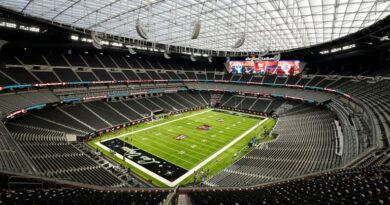Pickleball vs. Paddle Tennis: Exploring Similarities and Differences
Contents
Introduction
Pickleball and paddle tennis, two racquet sports, have lately gained popularity due to their distinctive combination of athleticism and fun. While there are certain parallels between these sports, they also have unique characteristics that make them stand apart. The worlds of paddle tennis and Pickleball will be thoroughly compared and contrasted in this extensive study.
Similarities
Court Size
Unlike traditional tennis, Pickleball and paddle tennis are usually played on smaller courts. The sports are now more approachable and appropriate for players of all ages as a result of this improvement. Both novice athletes and seasoned athletes can benefit from the speedy and thrilling action that the smaller court fosters.
Racquets
Both Pickleball and paddle tennis use solid paddles and racquets, in contrast to tennis, which typically uses strung racquets. These paddles, which come in a range of materials including wood, composite, and graphite, provide players more control and accuracy. In the realm of racquet sports, the switch to solid paddles has been a game-changer, providing a distinctive playing experience.
Net Height
Paddle Tennis and Pickleball are comparable to one another in terms of net height. Paddle Tennis’ center net measures 31 inches in height, whereas Pickle Ball’s net measures 34 inches. Players may transition between both sports with ease thanks to the uniformity of the net height, which adds to the attraction of both sports.
Serving
Both sports use underhand serves to give the game a strategic edge. There is a catch, though: serves must be made diagonally to the courts other side. This regulation makes sure that serving in both Pickleball and paddle tennis is not just about power but also about accuracy, making it a key part of the game.
Doubles Play
Pickleball and paddle tennis both place a strong focus on doubles play, which is one of their social and competitive advantages. The games become more pleasant for players of all skill levels when played with a partner since it adds a degree of strategy and teamwork to the activities. The excitement and collaboration that doubles play promotes on the court adds to the attractiveness of these sports.
Differences
Court Surface
The court surface is one of the most important differences between paddle tennis and Pickleball. Paddle Tennis is frequently played on a cushioned or rubberized surface, giving the ball a distinctive feel and bounce. As opposed to tennis, Pickleball is normally played on a hard court. The speed and bounce of the ball are substantially influenced by the kind of court surface, which results in different playing styles for each sport.
Ball
Another obvious distinction between the sports is the sort of ball utilized. A perforated, lightweight plastic ball similar to a wiffle ball is used in Pickleball. This design caters to players of all skill levels and enables accurate control and simple manipulation. Paddle Tennis, on the other hand, makes use of a depressurized tennis ball, which makes it heavier and may lead to quicker rallies. The player’s strategy and the game’s dynamics are greatly influenced by the ball they choose.
Scoring
The scoring systems used in the two sports are dissimilar. Pickleball rallies frequently result in points being scored, with either the serving or receiving side having a chance to do so. Every rally presents a chance to score, which makes the game exciting and dynamic. Paddle Tennis, on the other hand, typically uses traditional tennis scoring, where points are only awarded for successful serves. This differentiation gives each sport’s scoring system a distinctive flavour.
Rules and Boundaries
There are certain guidelines and regulations for each sport. Volleys are often not allowed in paddle tennis when they are close to the net. This rule emphasizes placement and groundstrokes. Pickleball players, on the other hand, are permitted to volley (hit the ball in the air) from behind the no-volley area, which is sometimes referred to as “the kitchen.” Pickleball is given a strategic aspect with this rule change since players must carefully manoeuvre around the kitchen.
Speed and Style
The main differentiators are speed and playing style. Paddle Tennis has a tendency to be played at a quicker pace with longer rallies because of the heavier ball and cushioned court surface. Players need to be agile and have fast responses. Pickleball, in contrast, combines power and grace with shorter rallies that lay an emphasis on strategy and shot placement. Both sports appeal to various sorts of players because of their distinctive playing styles.
Frequently Asked Questions
Q: Can I play Pickleball on a Paddle Tennis court?
A: Yes, you can play Pickleball on a Paddle Tennis court, but the experience may be different due to the court surface and ball characteristics.
Q: What kind of racquet should I use for Paddle Tennis?
A: Paddle Tennis paddles are typically solid and made from materials like wood, composite, or graphite.
Q: Is Paddle Tennis faster than Pickleball?
A: Yes, Paddle Tennis is generally played at a faster tempo than Pickleball due to the heavier ball and court surface.
Q: Can I use a tennis ball to play Pickleball?
A: While you can technically use a tennis ball for Pickleball, it’s recommended to use the standard lightweight, perforated Pickleball for the best experience.
Q: What is the purpose of the “kitchen” in Pickleball?
A: The kitchen, or no-volley zone, in Pickleball serves to prevent players from making volleys too close to the net, adding strategic depth to the game.
Q: Which sport is more suitable for beginners, Pickleball or Paddle Tennis?
A: Both sports are beginner-friendly due to their smaller court sizes, but Pickle ball’s slower pace may make it slightly more accessible for newcomers.
Conclusion
Finally, Pickleball and Paddle Tennis provide a thrilling universe of racquet sports that are suitable for a variety of players. They differ significantly in terms of court surface, ball type, scoring, rules, and playing style, but they are comparable in terms of court size, racquets, net height, serving technique, and the focus on doubles play. These differences give each sport its own identity and give participants a variety of courtside experiences. Both paddle tennis and pickleball have something unique to offer, whether you’re searching for frantic excitement or a refined, strategic game. Sports lovers have traditionally found excitement and friendship in racquet sports. Recent developments in two racquet sports, the popularity of Pickleball and paddle tennis has soared, enthralling players of all ages. These activities differ from classic racquet sports like tennis in that they provide a special fusion of athleticism and enjoyment. In this post, we shall examine the interesting worlds of paddle tennis and Pickleball and compared and contrast their main characteristics.




